Trading Operations are done either by via the Depth Column(s) and Orders Column(s) .
Order Submission #
Order Submission is done via the Depth Column. Enable Trading Interface must be turned on.
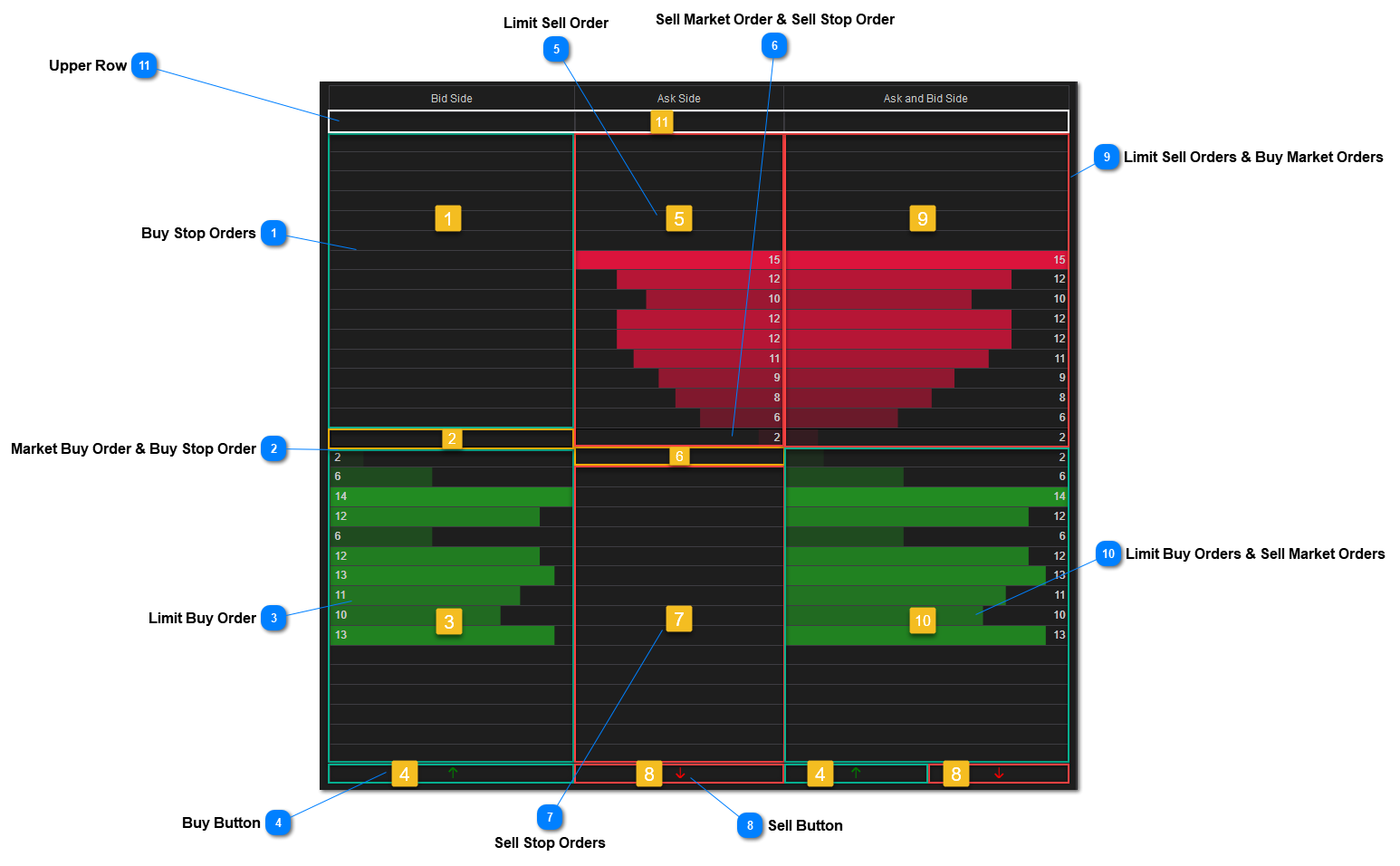
1 – Buy Stop Orders
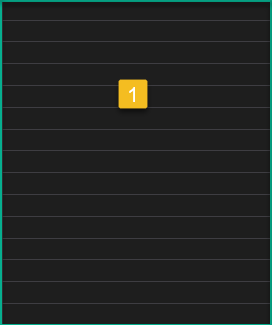 #
#
Places a Buy Stop Order when Data Type is Bid Side.
2 – Market Buy Order & Buy Stop Order #
![]()
Places a Buy Market Order when Data Type is Bid Side. The price is bid + 1 price above. Pressing CTRL key and click will place a Buy Stop Order. You can reverse this behavior but using the option “Button Click is Market Order“.
3 – Limit Buy Order #
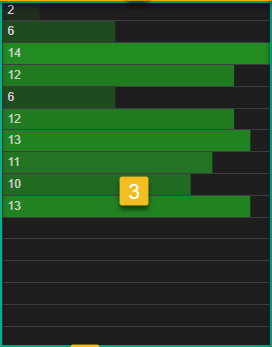
Places a Limit Buy Order when Data Type is Bid Side. Pressing CTRL key while clicking on the Bid Price will place a Sell Market Order (example – in the picture above the value is 2 – that’s the current bid price volume).
4 – Buy Button #
![]()
Click: Will place a Buy Limit Order at the Best Bid Price. Click + CTRL Key: Will place a Buy Market Order (at the Ask Price). You can reverse this behavior but using the option “Button Click is Market Order“.
5 – Limit Sell Order #
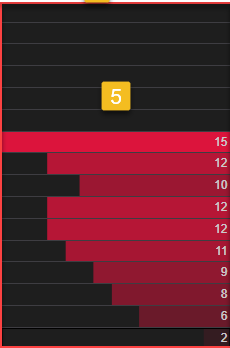
Places a Limit Sell Order when Data Type is Ask Side.
Pressing CTRL key while clicking on the Ask Price will place a Buy Market Order (example – in the picture above the value is 2 – that’s the current ask price volume).
6 – Sell Market Order & Sell Stop Order #
![]()
Places a Sell Market Order when Data Type is Ask Side. The price is Ask – 1 price below. Pressing CTRL key while clicking will place a Sell Stop Order.
7 – Sell Stop Orders #
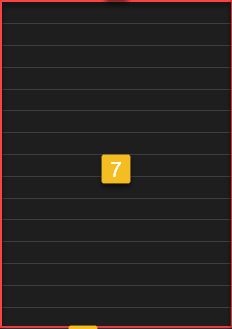
Places a Buy Stop Order when Data Type is Ask Side.
8 – Sell Button #
![]()
Click: Will place a Sell Limit Order at the Best Ask Price. Click + CTRL Key: Will place a Sell Market Order (at the Bid Price). You can reverse this behavior but using the option “Button Click is Market Order“.
9 – Limit Sell Orders & Buy Market Orders #
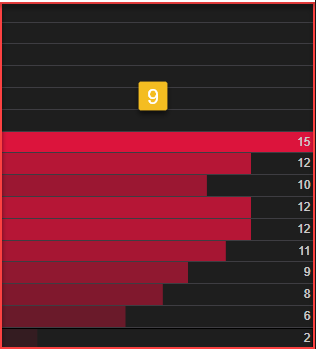
Places a Limit Sell Order when Data Type is Ask and Bid Side. Pressing CTRL key while clicking on the Ask Price will place a Buy Market Order (example – in the picture above the value is 2 – that’s the current ask price volume).
10 – Limit Buy Orders & Sell Market Orders #
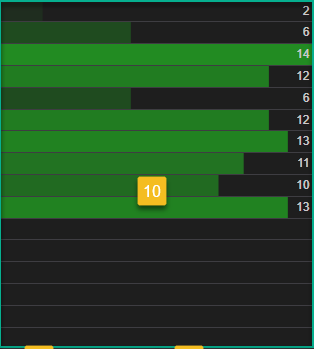
Places a Limit Buy Order when Data Type is Ask and Bid Side. Pressing CTRL key while clicking on the Bid Price will place a Sell Market Order (example – in the picture above the value is 2 – that’s the current bid price volume).
11 – Upper Row #
![]()
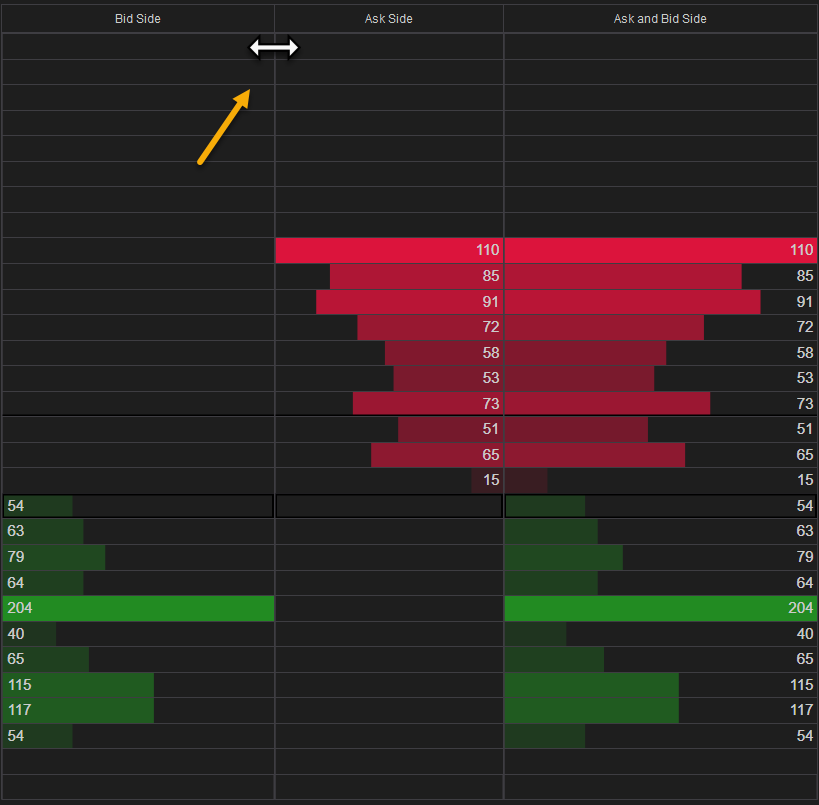
The upper price Row will not allow to place orders and is dedicated to resizing your columns. This is to male sure no orders are submitted by accident. This row is dedicated to resizing even if you mistakenly click before resizing. Although, you can resize the columns on every vertical position once the resize cursor is presented the upper row is where its recomended to resize when using the SuperDOM Utilities.
Position Cancelation and Reversing #
Order Cancelation/Reversing is done via the Orders Column. Enable Trading Interface must be turned on.
Single Order Cancel #
Hover the cursor on top of the order and click on the X to cancel.

Bulk by Side Canceling #
Depending on your Orders Column View Mode you will have on the bottom row dedicated cancelling buttons.
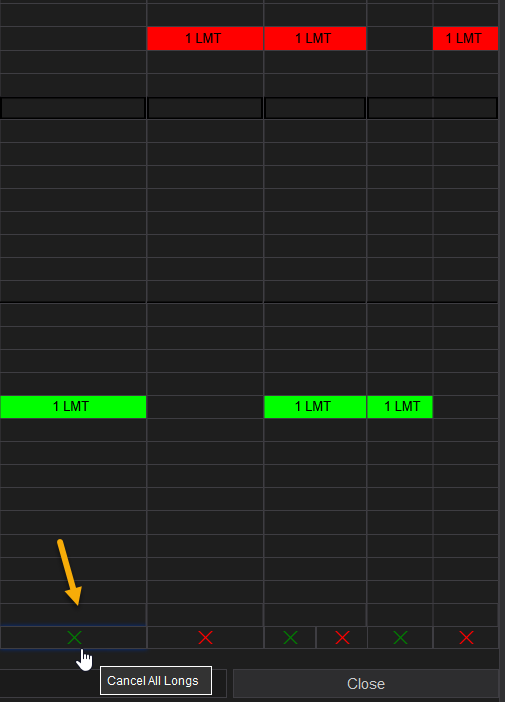
Closing positions and orders #
Orders column will place a button on the top row allowing you close either positions and working/pending/accepted orders, only position or only working/pending/accepted orders.
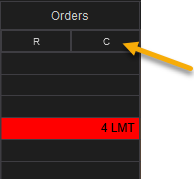
Click will close all positions and working/pending orders.
Click + CTRL key : will close only the position.
Click + SHIFT key: Will close only the working/pending/accepted orders.
Reversing a Position #
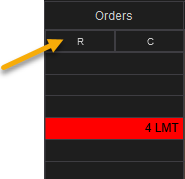
Click on “R” will close the current open position and open a reverse position. This applies to ATM as well.
Moving Orders #
Moving Orders is done via the Orders Column. Enable Trading Interface must be turned on.
1. To move orders to another price single click on the order.
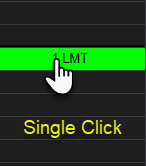
2. Cursor will change to a cross and the cell for the destination price will be highlighted.
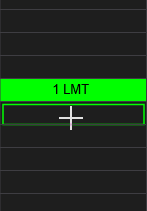
3. To apply the move simply click on the destination price.
Quantity Modification #
You won’t be able to submit more orders while editing quantities. Please make sure you finished editing your order before placing additional orders.
1. To change the quantity double click on the order you want to modify.
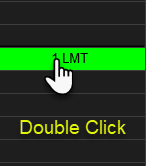
You will be presented with the Quantity control.
2. To change the Quantity Value you can use your mouse scroll wheel, insert manually with the keyboard or use the Quantity Pad.
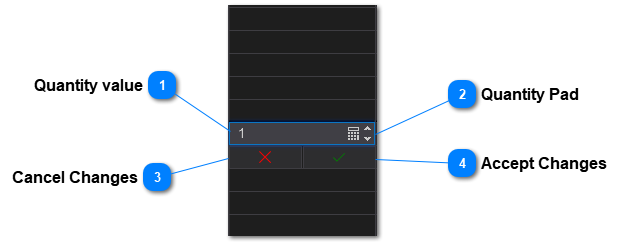
1 – Quantity value #
Shows the Order Quantity. Can use the mouse scroll wheel, insert manually with the keyboard
2 – Quantity Pad #
Click to use the Quantity Pad.
The Quantity Pad Allows you to set predetermined sizes or add(Increment) predefined sizes to your order. You can use the ESC key to null your changes and return.
3 – Cancel Changes #
Cancels the changes to the quantity value. You can also use the ESC key to null your changes and return.
4 – Accept Changes #
Accepts and applies the changes to the quantity value.
SuperDOM Utilities and Trading Operations #
The SuperDOM Utilities Column allows to collapse and uncollapse certain controls from the SuperDOM. Some of these controls might be required for your trading.

1 – Position Control #

Rev – Left mouse clicking on the “Rev” will close the current open position and open a reverse position.
Close– Left mouse clicking on the “Close” will close the current position and cancel any working orders associated with the instrument/account combination. Clicking on this button with your middle mouse button (scroll wheel) will close the selected active strategy only. This means that the position size of the strategy will be closed and any working orders associated to that strategy will be cancelled.
More information at the official NinjaTrader Support please see Managing Positions SuperDOM.
2 – Order Control #

Instrument Selector – Opens a list of recently used instruments or instruments contained in a predefined list.
TIF – Sets the Order Time In Force for the submitted orders.
Quantity – Sets the order quantity. To modify quantity after submission please see Order Quantity Modification.
Account – Sets the account.
ATM Strategy – Sets the Advanced Trade Management Strategy. More information at the official NinjaTrader Support please see Advanced Trade Management (ATM).






